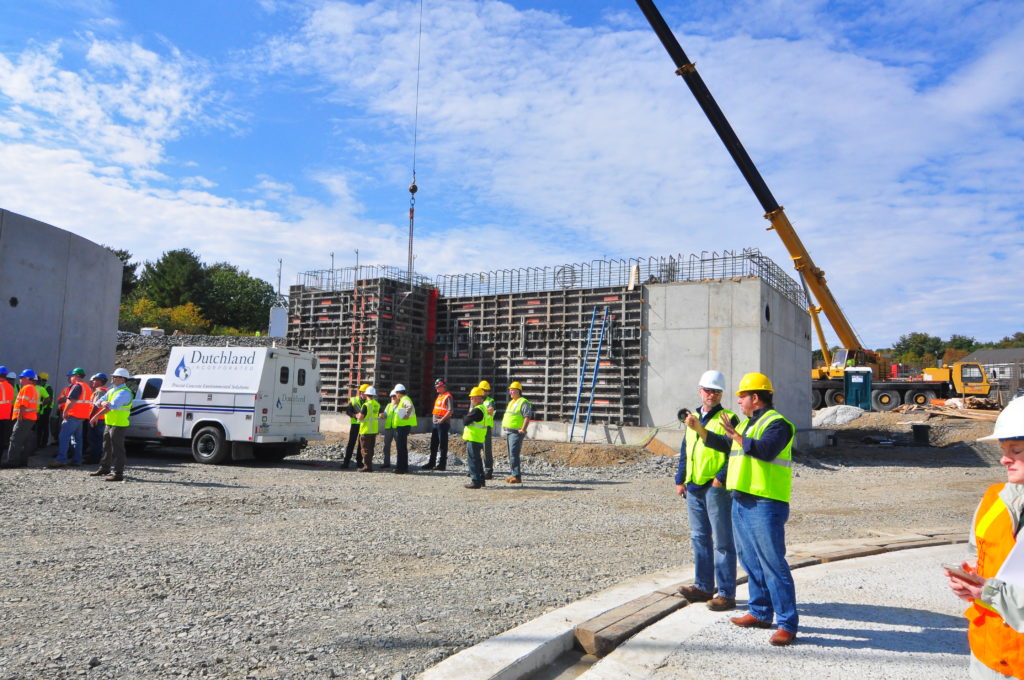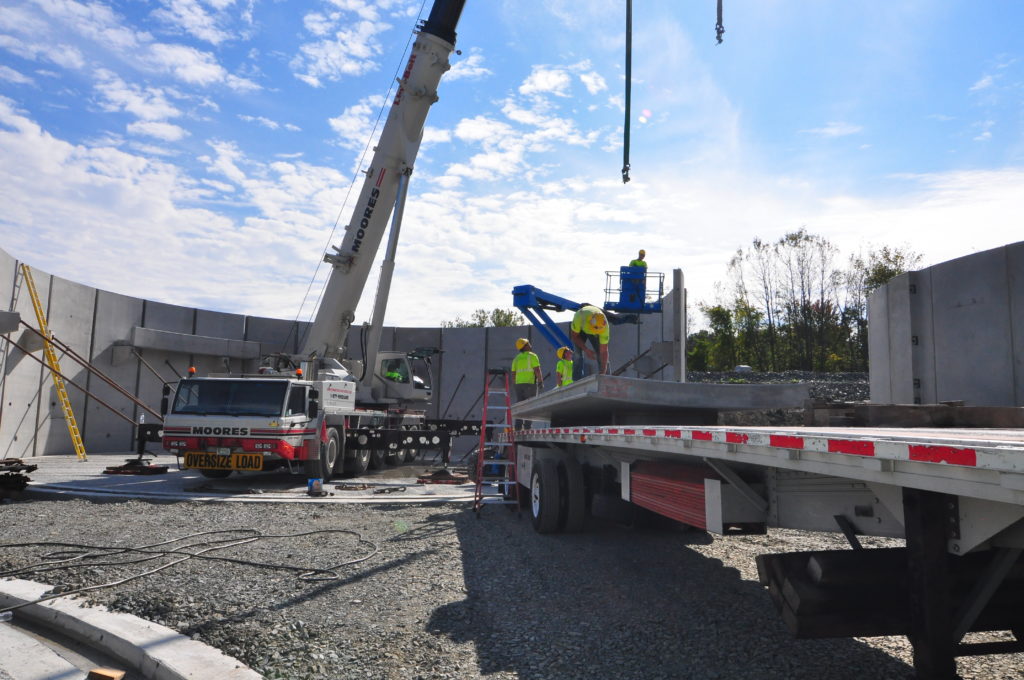|
If you have driven on Route 101 west from Hampton, you may have noticed some big changes happening at the Exeter Wastewater Treatment Facility over the summer and fall. Responsible for properly treating wastewater before discharging into the Squamscott River – and ultimately the Great Bay Estuary – the Exeter Wastewater Treatment Facility is currently undergoing some major upgrades to continue reducing point sources of nitrogen and other nutrients and pollutants.
Although nitrogen is an important nutrient for life in our estuaries, high levels of nitrogen may be cause for concern. Nitrogen enters our local waterbodies – like the Squamscott River and the Great Bay Estuary – in two ways: non-point and point sources. Non-point sources include 1) stormwater runoff which carries pollutants from fertilizers, leaking cars, oil spills, and animal waste, and 2) groundwater through septic systems and leaking sewage. In addition to non-point sources of pollution, there are 17 municipal wastewater treatment facilities that discharge treated wastewater into rivers and ultimately the Great Bay Estuary.
For the latest information on nitrogen loading from non-point and point sources visit the 2018 State of Our Estuaries report.
Exeter Modernizes Its Wastewater Treatment
At the Exeter Wastewater Treatment Facility on Newfields Road, construction crews operating heavy equipment stay busy all week, moving earth and arranging enormous concrete slabs. All this activity is part of the town’s exciting plan to build a new, state-of-the-art wastewater treatment facility at the current site. With a price tag of roughly $50 million – approved by town voters at the 2016 Town Meeting and completely funded by local sewer system users – this venture will be the largest capital project in the town’s history. Engineering designs and constructions contracts were put to bid and awarded to Wright-Pierce Engineers Inc. of Portsmouth and Apex Construction of Rochester. The project broke ground on June 6th and is expected to be completed towards the end of 2018.
 Why the Upgrade?
Originally built in 1964, Exeter’s current wastewater treatment facility is a secondary treatment plant utilizing aerated lagoons, as was common for the time. Wastewater coming into the plant is filtered, chemically treated, disinfected, and dechlorinated. Clean water is then released into the nearby Squamscott River, eventually making its way to the Great Bay Estuary.
In 2009, the NH Department of Environmental Services reported water quality concerns regarding high levels of Total Nitrogen (TN) in the Squamscott River and Great Bay Estuary, and in 2013 the EPA issued the town a “Limit of Technology” (TN 3 mg/L) National Pollutant Discharge Elimination System Permit. After some negotiation, the EPA issued an Administrative Order on Consent (AOC) to Exeter, aimed at achieving a less strict effluent nitrogen limit (TN 8 mg/L) within 5 years, provided the town build a new wastewater treatment facility, and also monitor and reduce non-point sources of nitrogen.
Hardhat Luncheon
On October 11, Dutchland Inc. of Gap, PA, the company manufacturing the concrete tanks to be used at the facility, hosted a luncheon for interested stakeholders to tour the construction site as one of the 70-foot-diameter clarifier tanks was assembled. This was an opportunity that we at the PREP offices never expected to have, but one that was too exciting to miss!
Led by Dutchland employees, smalls groups of us donned hardhats and bright yellow vests (safety first!), and got to walk through the construction site. As we watched, multiple concrete panels were carefully hoisted into position and secured in place, forming the outer wall of the clarifier tank. We were informed this tank would be completed before the day was out, and it was easy to believe seeing the speed and precision the team used with each panel. It was a privilege to see the construction of the new facility, and we are excited to join them again for a ribbon cutting ceremony when to facility opens.
 Looking to the Future
Wastewater treatment plays an important role in a community, allowing used or dirty water to become clean again and be returned to the local environment. And although a costly endeavor, the construction of this new wastewater treatment facility is a well-received and exciting opportunity for the town of Exeter that will benefit the Squamscott River, the Great Bay Estuary, and those who live, work, and play in the Piscataqua Region watershed.
Those interested in more information on this project and to view live footage of the project site can visit the Town of Exeter’s official website. |